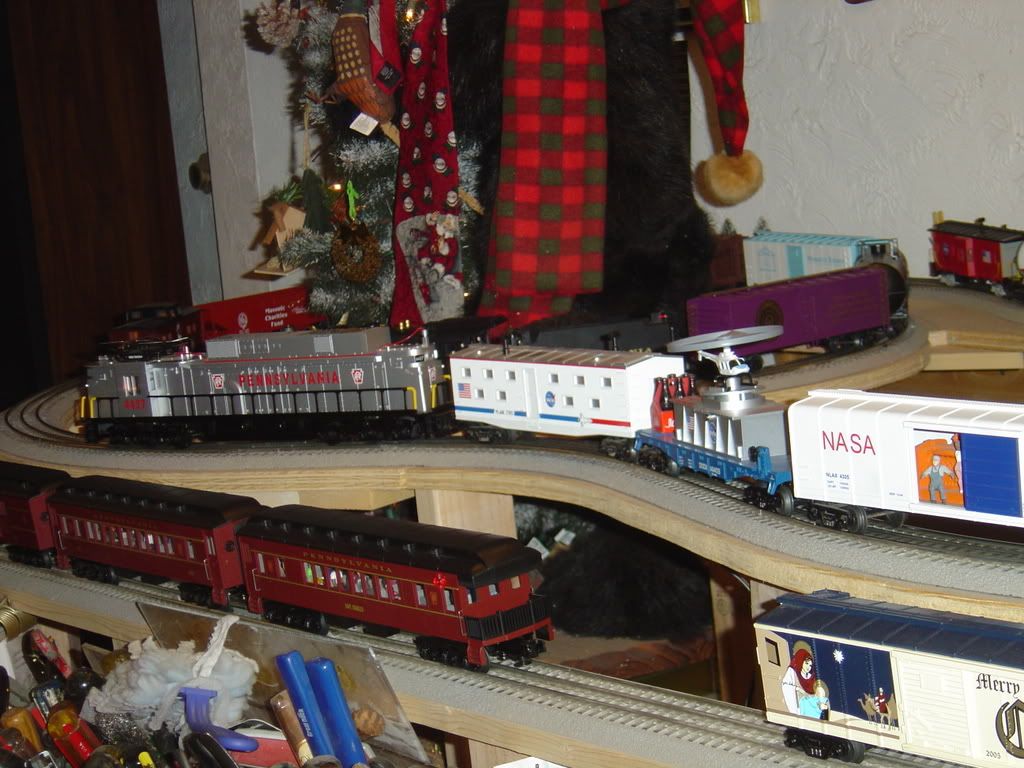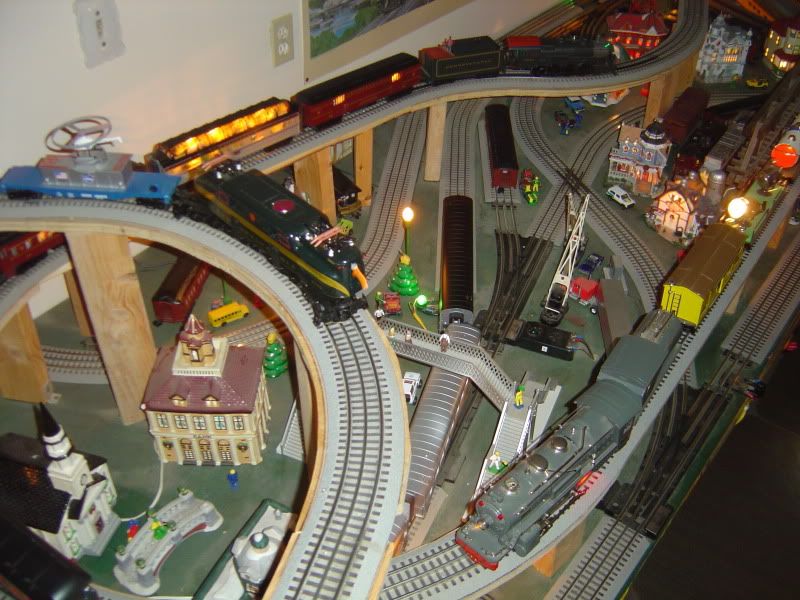In fact I have 3 questions concerning how to run MTH Protosound 3 locomotives on the same track as other standard DC traditional locomotives (DC engines, generally 5 poles, fed directly in DC).
My 3 rails scale 0 circuit consists of 3 sub-circuits with center rail ( hot rail) isolated from each other sub-circuit and with outside rails (common) still connected together. There are 3 independent DC transformers feeding voltage to the 3 independent sub-circuits. There are 5 blocks on the circuit with on and off block systems allowing 3 to 4 trains to run automatically together on the circuit.
I recently bought a 241 A Mountain MTH Protosound 3 locomotive that I would like to run on the circuit at the same time as other traditional DC locos and there comes the question:
1) Running an MTH protosound 3 locomotive in DC:
If you run the MTH locomotive in standard analogical DC mode simultaneously with other standard DC locomotives , you will find that the MTH locomotive will run in the opposite direction as the other standard DC locomotives. It would be very useful to use a “reverse polarity switch” to reverse the locomotive direction.
My question is :
Is there a hidden polarity switch somewhere on the locomotive or is there an easy way to install one and How and Where?
Do you see something else to do to change the standard running direction of the locomotive in DC mode.
2) Running an MTH protosound in DCS with other standard DC locomotives:
My question is:
If I decide to use DCS to run the MTH locomotives in addition to the DC standard feeding , could I have on the same track:
-the MTH locomotive
-the other standard DC locos
Is DCS harmful to the standard DC locomotives and vice versa?
If the MTH locomotive ( running in DCS mode) stops at signal ( voltage less than 5 volts to still keep lights and sound) , when it will starts again, will it go in the initially chosen direction or will I have to apply again manually the appropriate DCS command to have it running the right initial direction?
3) Experimenting the MTH locomotive running in DC:
if you normally start the MTH Protosound 3 locomotive in DC mode ( without DCS), get it running then stop it abruptly ( 20 volts to zero volt), wait for no more lights and no more sound then restart it abruptly ( from zero volt to 20 volts) within no more than 20 seconds, the MTH locomotive will immediately restart like a standard traditional locomotive but with no sound and no lights.
My question is:
Is this a specific mode that you could address more gently through specific DCS commands or otherwise and how?
Is this new working mode harmful to the loco?
Is there in this mode a specific way to put again the lights on?
This could be another way to run the MTH locomotive with other standard DC locomotives
Many thanks if you could answer my questions
Best regards
Jean SAUVAGE.




